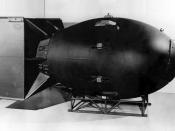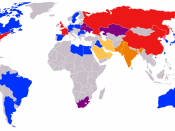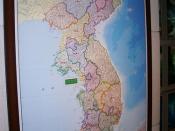The Cold War which was sparked between the two superpowers that had emerged from the Second World War, namely the United States and the Soviet Union, brought about a massive arms race between the two powers. This arms race included nuclear weapons, which were first developed by the United States during the early 1940's and used in 1945 in two attacks against its Japanese foes in the cities of Hiroshima and Nagasaki. The Soviet Union, which was an ally of the United States during the Second World War was immensely shocked and threatened by the power of this new weapon and immediately set forth to develop a nuclear weapon of its own. As both sides strove to increase its nuclear weapons capabilities, the size of each country's arsenal grew and at several points during the Cold War, such as the Cuban Missile Crisis, the prospect of a nuclear war between the two powers which threatened not only the two countries but populations around the world seemed close at hand.
There also existed the danger posed by other countries' nuclear arsenals. Britain (1952), France (1960), and China (1964) became nuclear powers soon after the Soviets Union and the United States along with other nations became worried that nuclear weapons would proliferate around the world as other nations strove to develop their own. For the United States a world with many nuclear weapons states was unacceptable. Furthermore, both it and the Soviet Union wanted to keep the numbers of its weapons down.
In this context both powers began work on developing a nuclear non-proliferation regime, of which the main component was the Nuclear Non-Proliferation Treaty (NPT) that was opened for signature in 1968. At this time there were only five nuclear weapons states, as mentioned above, and the intent of the...


